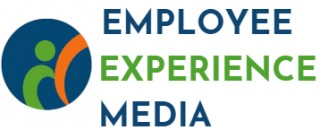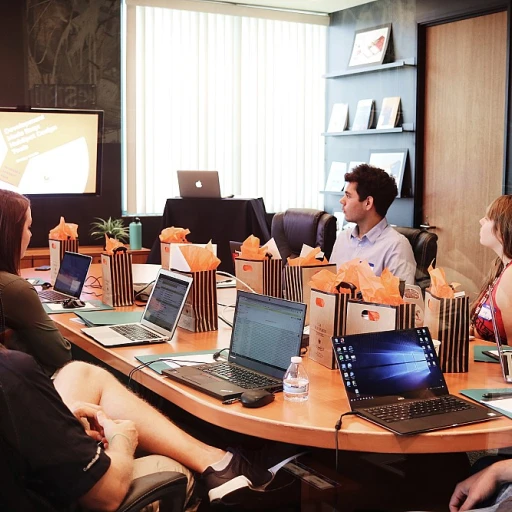
Understanding the Drexler-Sibbet Team Performance Model
The Foundational Elements of the Drexler-Sibbet Framework
The Drexler-Sibbet Team Performance Model, often referred to as a crucial guide in team development and performance enhancement, breaks down the team-building process into distinct stages. This performance model offers a roadmap for creating high-performing teams by addressing both the conceptual and practical facets of team dynamics. One of the initial steps in this model involves understanding where your team currently stands in the development process. Each stage, from forming to transforming, encompasses specific challenges and opportunities for growth.- Forming the Foundation: At the start, teams must concentrate on building trust among members. Trust is a critical component that influences every subsequent stage and is crucial for high performance. This involves open communication and establishing a safe space where team members feel comfortable expressing ideas and concerns.
- Clarifying Roles and Goals: For the team to function effectively, there must be a clear understanding of individual roles and goals. Aligning these with the overall project objectives ensures that each member knows their contributions matter. Goal clarification is vital for streamlining processes and fostering cohesion.
The Role of Trust in Team Performance
Trust: The Cornerstone of Team Performance
Trust is undeniably the foundation for any successful team, and its significance cannot be overstated. In the Drexler-Sibbet Performance Model, trust is a crucial element that acts as a lubricating oil for the gears of team dynamics. Without it, the model’s stages—spanning from team development to high performance—can falter, leading to stagnant growth and unresolved challenges. The journey of building trust starts early in the team’s formation stage. Team members must believe in each other's capabilities and intentions to establish a robust foundation for collaboration. Without this initial trust, the ensuing stages could suffer setbacks, making goal clarification and effective decision-making difficult. Trust fosters an environment conducive to open communication, where team members feel comfortable voicing their honest opinions and sharing feedback. This is essential for high-performing teams as it enables genuine dialogue and constructive criticism, resulting in informed decision-making processes. In a workshop setting, team leaders can facilitate trust-building activities to accelerate this process. These activities often involve open discussions and relationship-building exercises that bring to light the shared goals and values within the team. Regularly addressing trust-related challenges can prevent misunderstandings and conflicts from festering over time. Trust becomes even more critical when teams face potential conflicts or challenges. It is during such times that members must rely on their established trust to navigate through issues collaboratively and maintain focus on the project goals. Investing in your team’s trust-building efforts is a strategic move towards enhancing overall performance. It lays the groundwork for effective collaboration and smooth transitions between various stages of team development. For further insights on optimizing team experience, consider investing in your team and fostering a more connected workplace environment.Aligning Team Goals and Roles
Clarifying Team Goals and Roles for Optimal Performance
In the journey towards achieving high performance, aligning team goals and roles is a crucial step. This alignment ensures that every team member understands their responsibilities and how they contribute to the overall objectives. The Drexler-Sibbet Team Performance Model emphasizes the importance of this stage in fostering a cohesive and effective team environment.
When team goals are clearly defined, it sets a foundation for trust building among team members. Trust is essential for team development, as it encourages open communication and collaboration. Without clear goals, teams may struggle with decision making and face challenges in maintaining focus on the project at hand.
Steps to Align Goals and Roles
- Goal Clarification: Begin by ensuring that all team members have a shared understanding of the team's objectives. This can be achieved through workshops or team meetings where goals are discussed and refined.
- Role Definition: Clearly define the roles and responsibilities of each team member. This helps in avoiding overlaps and ensures that everyone knows their specific contributions to the project.
- Regular Check-ins: Schedule regular check-ins to review progress and address any questions or concerns. This keeps the team aligned and allows for adjustments as needed.
Aligning team goals and roles is not a one-time process but an ongoing effort that requires attention and adaptability. By focusing on this stage, teams can enhance their effectiveness and navigate challenges more efficiently. For those interested in exploring career opportunities that prioritize team alignment and development, consider visiting this resource for more insights.
Fostering Open Communication
Encouraging Transparent Dialogue
In the journey towards achieving high performance, fostering open communication within teams is crucial. The Drexler-Sibbet Team Performance Model emphasizes the importance of transparent dialogue as a foundation for trust building and effective collaboration. When team members feel comfortable expressing their thoughts and ideas, it enhances the overall team dynamics and contributes to a more cohesive work environment.
Creating a Safe Space for Expression
One of the key steps in this process is creating a safe space where team members can freely share their perspectives without fear of judgment. This involves establishing ground rules for respectful communication and encouraging active listening. By doing so, teams can navigate challenges more effectively and ensure that all voices are heard, which is essential for goal clarification and decision making.
Implementing Best Practices for Communication
- Regular Check-ins: Schedule regular meetings to discuss progress, address concerns, and align on project goals. This helps in maintaining a continuous flow of information and keeps everyone on the same page.
- Feedback Loops: Encourage constructive feedback among team members. This not only aids in personal development but also enhances team effectiveness by identifying areas for improvement.
- Use of Collaborative Tools: Leverage technology to facilitate communication. Tools like project management software can streamline the process and ensure that information is easily accessible to all team members.
Overcoming Communication Barriers
Despite best efforts, communication barriers can still arise. It's important for team leaders to recognize these challenges and address them promptly. Whether it's through workshops or team-building activities, the goal is to reinforce the importance of open communication and ensure that it remains a priority throughout the various stages of team development.
By prioritizing open communication, teams can enhance their performance and work towards becoming high performing units. This step is integral to the overall success of the Drexler-Sibbet model, as it lays the groundwork for trust and collaboration, which are essential for navigating the complexities of team dynamics.
Navigating Conflict and Challenges
Addressing Conflicts with Constructive Dialogue
In any team, conflicts and challenges are inevitable. The Drexler-Sibbet Team Performance Model emphasizes the importance of navigating these hurdles effectively to maintain high performance. At this stage, team members may face disagreements over goals, roles, or processes. Addressing these conflicts with constructive dialogue is crucial for team development and trust building.
Encouraging Open Communication
Open communication is a cornerstone of resolving conflicts. Team leaders should foster an environment where members feel comfortable expressing their concerns and questions. This openness not only aids in conflict resolution but also enhances overall team effectiveness. Regular workshops can be an effective way to practice communication skills and reinforce trust among team members.
Implementing Best Practices for Conflict Resolution
- Active Listening: Encourage team members to listen actively to each other’s perspectives. This helps in understanding the root cause of conflicts and finding common ground.
- Goal Clarification: Revisit the team’s goals and roles to ensure alignment. Misunderstandings often arise from unclear expectations.
- Decision Making: Use a collaborative approach to decision making. Involve all team members in the process to ensure buy-in and commitment.
- Trust Building: Reinforce trust by acknowledging contributions and showing appreciation for diverse viewpoints.
Turning Challenges into Opportunities
Challenges, when addressed effectively, can lead to significant growth and development for the team. By viewing conflicts as opportunities for improvement, teams can enhance their performance and move towards becoming high performing units. The Drexler-Sibbet model provides a structured approach to navigate these stages, ensuring that teams not only survive challenges but thrive through them.
Measuring Team Success and Growth
Reflecting on Team Advancement and Achievements
To effectively measure team success and growth, it is crucial to assess the stages of development outlined by the Drexler-Sibbet Model. This performance model provides an excellent framework for examining how teams evolve over time, from initial trust building to reaching high performance. Evaluating success involves considering both team dynamics and individual contributions.- Utilizing Feedback Loops: Regular feedback is essential to understand how well teams are aligning their goals and roles. It helps identify areas where the process can be improved, thereby enhancing team effectiveness.
- Key Performance Indicators (KPIs): Setting clear, measurable targets that align with team objectives enables teams to track progress. Effective goal clarification ensures all members are aware of what success looks like.
- Reviewing Team Dialogue: Analysis of communication patterns offers insights into how open communication has contributed to overcoming challenges and fostering a collaborative environment.
- Conflict Resolution Patterns: Examine how teams have navigated conflicts, using the strategies discussed earlier. Successful conflict resolution often results in stronger trust among team members and more robust team decisions, facilitating high performance.
- Reassessing Trust Levels: Trust is the foundation for any high performing team. Regular assessment of trust levels within a team can provide insights into improvements made since the initial trust-building stage.











